- All Posts
- /
- Tips for Sending Dramatically Better Emails
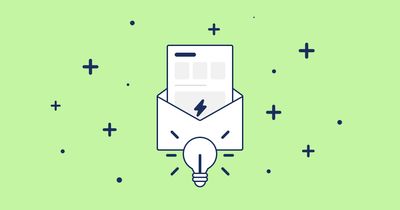
-
 Jimmy Daly
Jimmy Daly
-
Updated:Posted:
On this page
Email marketing is all about giving customers delightful and valuable experiences that keep them engaged with your brand and product. We’ve put together some of the best email marketing tips to help you improve the performance of your campaigns.
Make it exclusive
Limiting an offer to a specific group of people can suggest that a product or service is valuable and in short supply. Studies, by psychologist Dr. Robert Cialdini, show that people tend to desire and place more value on things that are scarce.
Using this principle of scarcity through exclusive offers is an email marketing best practice used to help increase customer engagement and conversion.
Harvey Nichols uses exclusivity in their Black Friday email by only offering the sale preview to Reward members. This provides Reward members with early access to sale items that might later be sold out when the sale is open to everyone. Making something exclusive can create a sense of scarcity that entices customers to engage with your email and take action quickly.
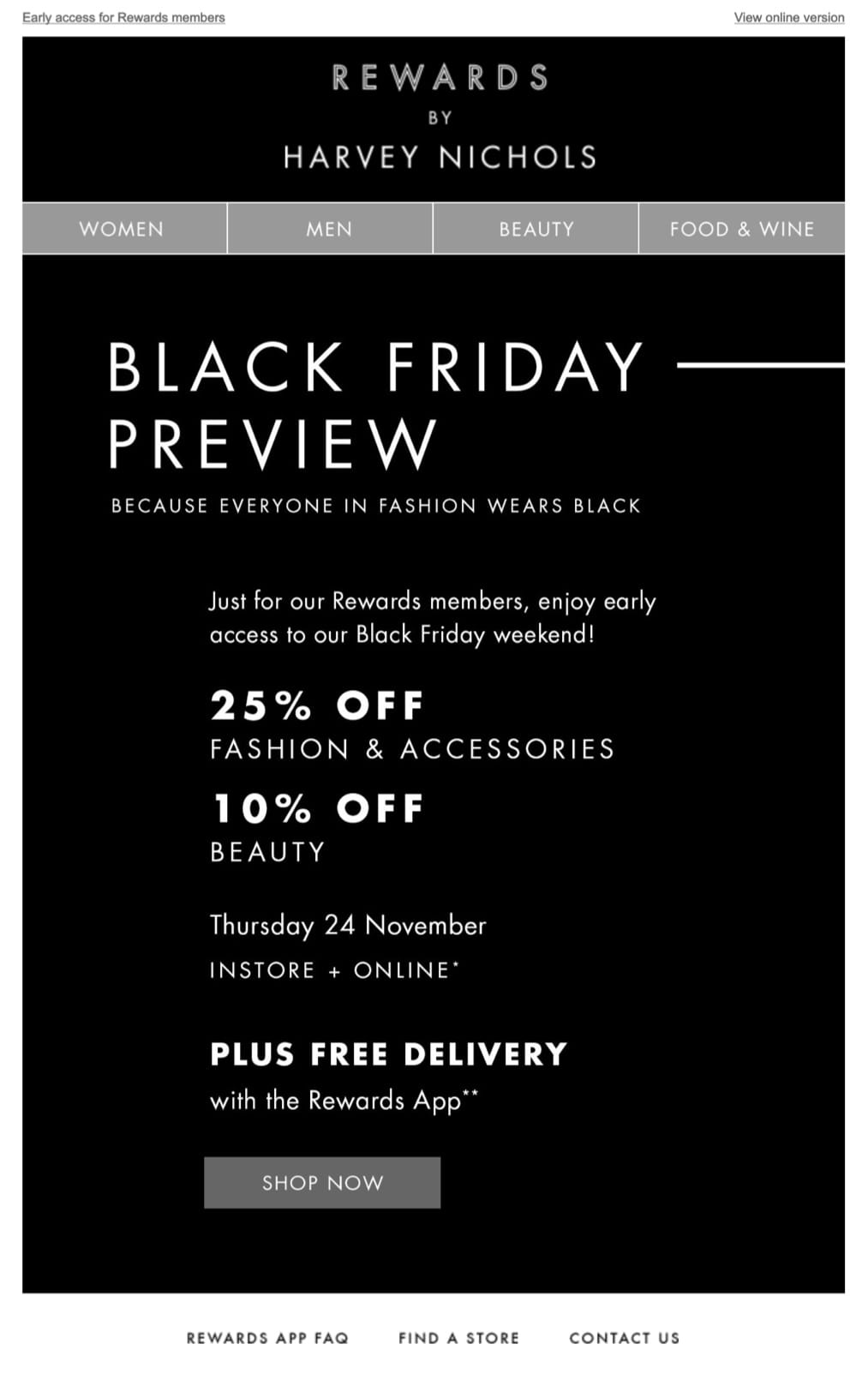
Making your email subscribers feel special is a great way to generate excitement for the content or offers you send them.
Offer something extra
Your email subscribers are getting dozens, if not hundreds, of other emails every day. They are constantly being asked to start a free trial, download an e-book or follow someone on Twitter. There’s an overwhelming amount of noise in the inbox.
Giving your users something extra goes a long way towards earning their trust. Squarespace acknowledges the reality of our busy lives and offers a chance for an extended trial.
Everyone gets busy and you may not have had enough time to evaluate Squarespace. For this reason the subject line: Your trial has expired. Need more time? Sounds helpful and mindful.
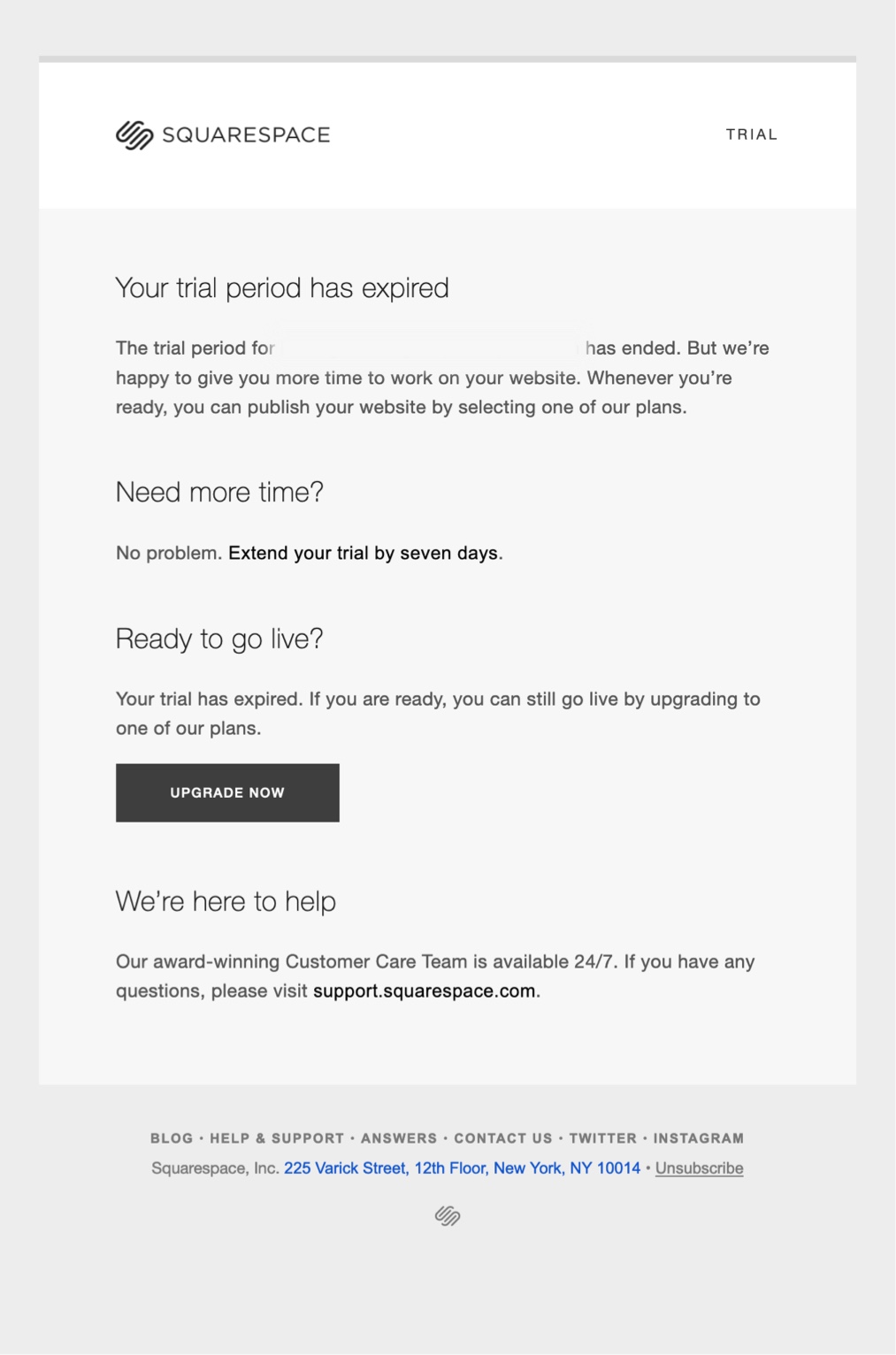
Buffer’s Kevan Lee told us that his best email marketing practice is to “Delight subscribers”. Dropbox took that advice to a new level with this email. They gave me 10x the storage space extra for the same price! Do you think I’ll open the next email they send? You bet.

Of course, this is a major business decision, not just one of email marketing best practices. But the decision reflects Dropbox’s mission as a company: to make their customers happy.
Use social proof
Social proof, such as customer reviews, ratings, and user-generated content can help build credibility and bring your customers closer to a buying decision. According to YouGov, 78% of consumers in the U.S. read reviews before making a purchase.
Pipedrive uses this email marketing best practice in their welcome email.

Many forums and communities take full advantage of social proof. Because they have active users, they can parlay engagement into more engagement.
Quora emails include relevant, user-generated stories along with authors’ names. The recommended stories are based on a user’s individual activity on the forum, this way they can get back to topics that raised their interest and resume the reading.
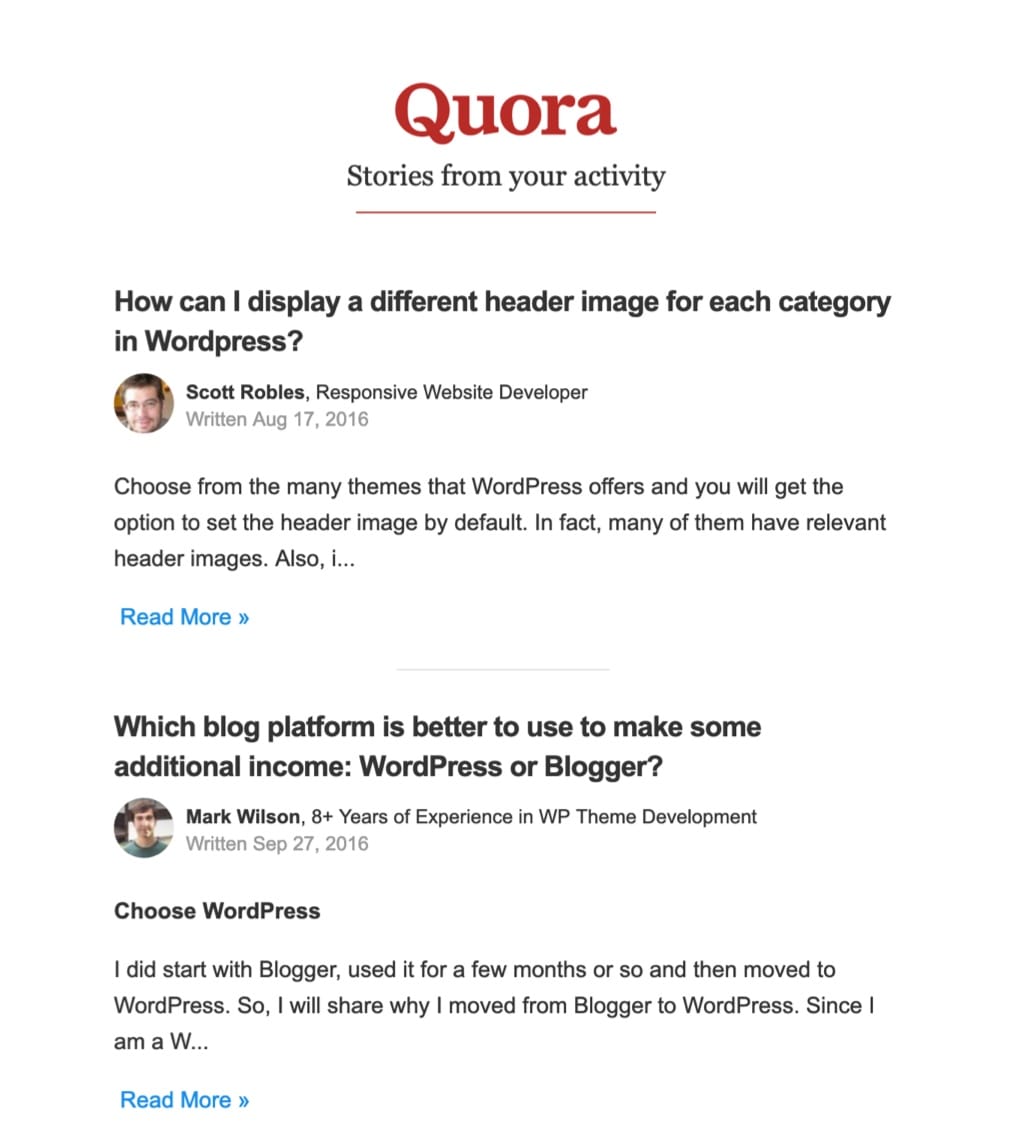
GrowthHackers take a similar approach but with even more emphasis on their users’ activity. They encourage email engagement through social proof by including the number of votes on a discussion, showing that other readers found the content valuable.
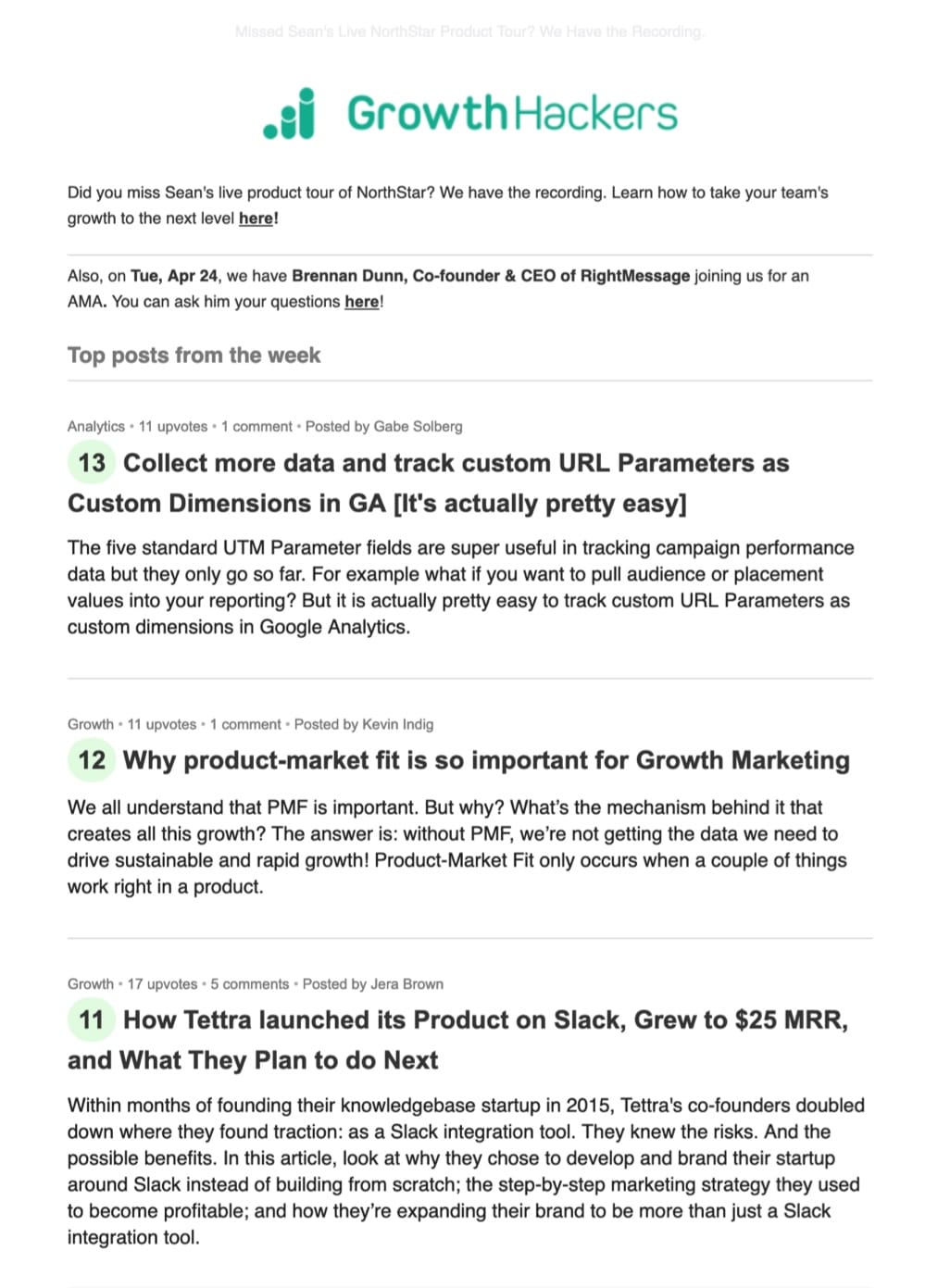
If you don’t have a forum, consider including social share numbers in your newsletters. The effect is the same – readers want to know what their peers are interested in.
Humanize your brand
Email is a good opportunity to humanize your brand. Talking about challenges, obstacles, and failures, giving a glimpse behind the scenes or expressing gratitude can help make your brand feel more human. Offering the story behind the brand and sending it from a person within the company can help form a relationship with customers.
Adopting a friendlier, conversational tone is another email marketing best practice that can help transform the way your prospects perceive your brand.
Andy Puddicombe at Headspace shares his gratitude to customers for allowing him to be part of their mindfulness journey.
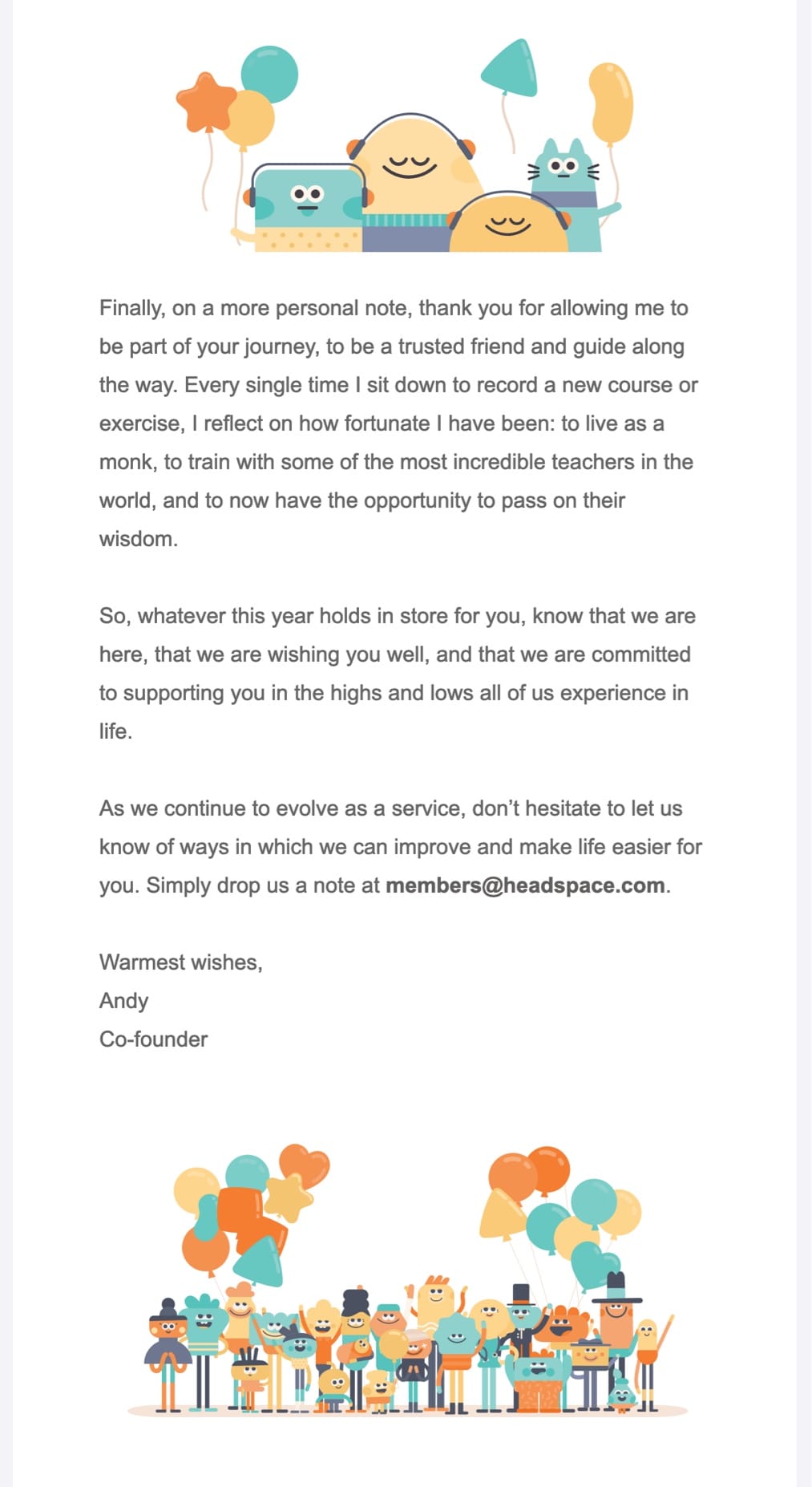
Find out more about email personalization.
Aim for micro conversions
Death to the Stock Photo grew their business almost entirely using email marketing. Co-founder, David Sherry spoke to us about the company’s email marketing strategy and shared one of his email marketing best practices.
It’s simple but seriously profound. He builds opportunities for micro conversions into every email so that people get used to taking action. This can be as simple as “Follow me on Twitter”.
Most businesses are powered by small wins and these micro conversions can pave the way to macro conversions.
Death to the Stock Photo includes free, downloadable stock photos in each email. People are used to clicking his emails because there is always value in converting.

The key point – if you deliver an email and the user gains real value from what they clicked, the user is more likely to engage with future emails.
Find out more about creating small wins in retention email campaigns.
Include downloads
The number of emails sent and received with attachments increased by 43% from 2009 to 2013, according to Radicati. During that same period, emails without attachments increased by 27%.
Death to the Stock Photo only send one email per month, but each contains a downloadable file of beautiful images that the recipient can use on their blog or in an email.
Read more about how Death to the Stock Photo built a profitable business with email.
Death to Stock Photo incentivizes new users with the free monthly photo packs. Including a free downloadable image in each email has been key to their list growth and user engagement. When subscribers are accustomed to getting value from each email, it’s much more likely they’ll be ready to upgrade when the time comes.

Tell readers what to do next
The cardinal sin of conversion is a failure to make the next step abundantly clear. How can someone convert if they aren’t sure what to do?
Conversion Rate Experts stress this as one of email marketing best practices over and over again: “Be clear and direct with your users, telling them exactly what you’d like them to do.”
This email from Backlinko is a good example of this marketing best practice.

The idea is simple: just add the webinar to your calendar. Not only does this reinforce the behavior pattern of clicking Backlinko emails, but it also increases the chances that the registrants attend the webinar.
Answering the question “What should I do next?” is also a great way to boost engagement with a SaaS product. Dropbox asks you to try Paper and tells you exactly what you can do with it.
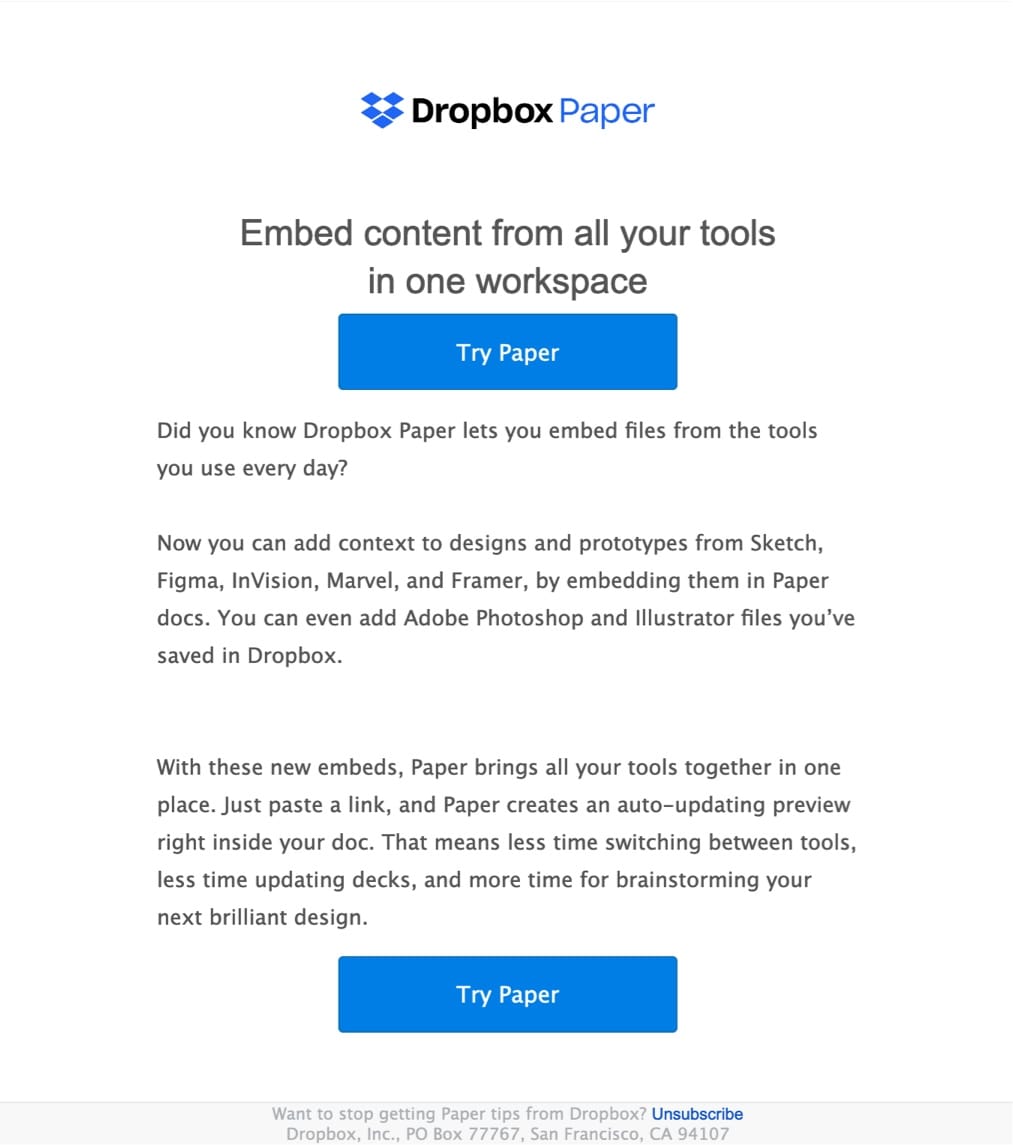
Remind readers what you do
Don’t expect people to remember what you do – it’s your job to remind them, every time. Every email we send about Exist, whether it’s to existing users or people who signed up for our mailing list months ago, includes a link to remind them what Exist is. And that link gets clicks every time. – Belle Beth Cooper, Exist
It’s almost too simple.
Headspace does this nicely. They use real-life context to remind you about their little features and justify their importance for your mindful-being.
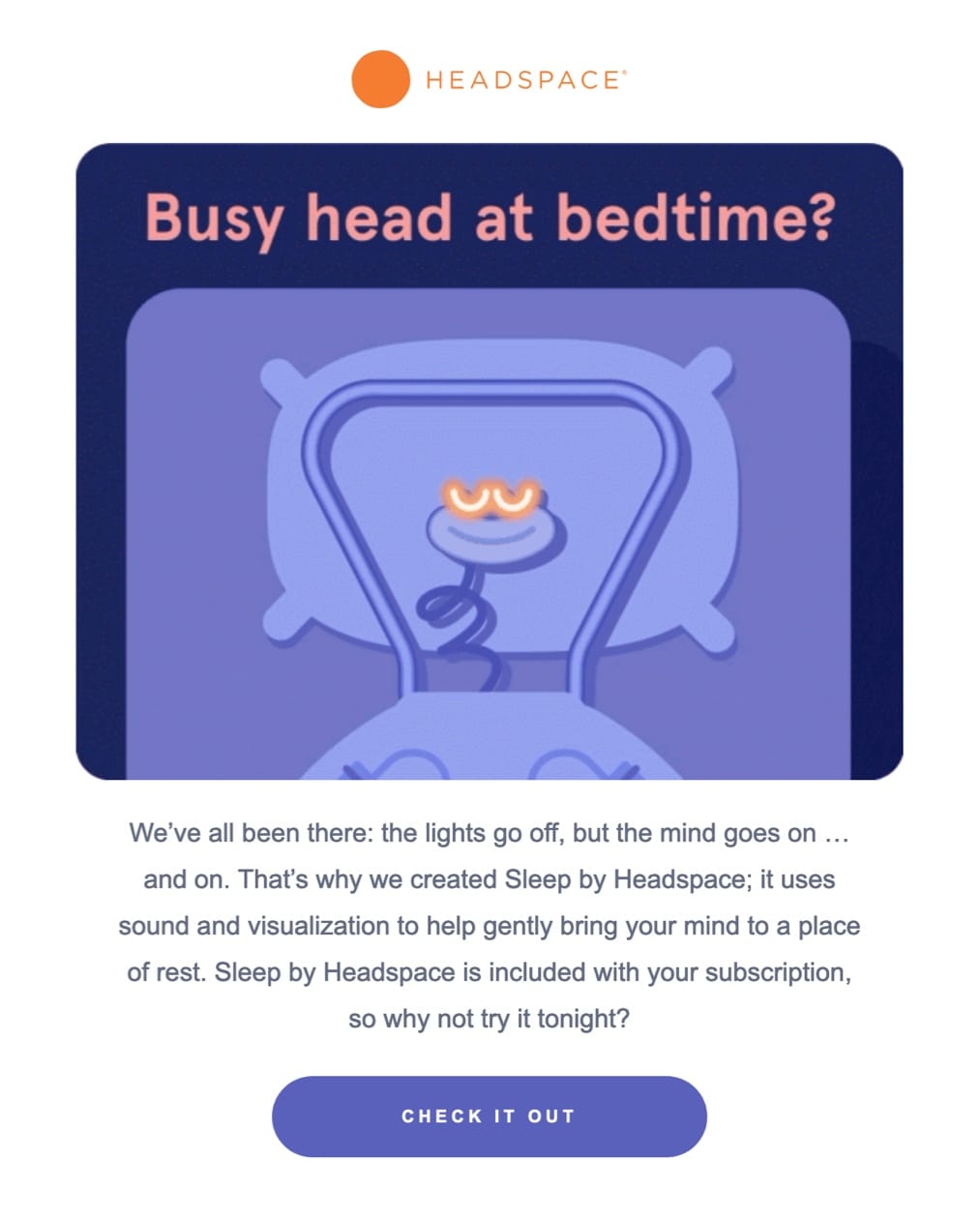
Simple? Yet effective. Is it one of email marketing best practices you’d like to bookmark? 🙂
Be generous
Generosity might be one of the most overlooked email marketing best practices. However, it’s not that hard to make people happy. How many assets do you have that could be used to make your customer’s day better?
Starbucks provides a great example with its email offering a free coffee.
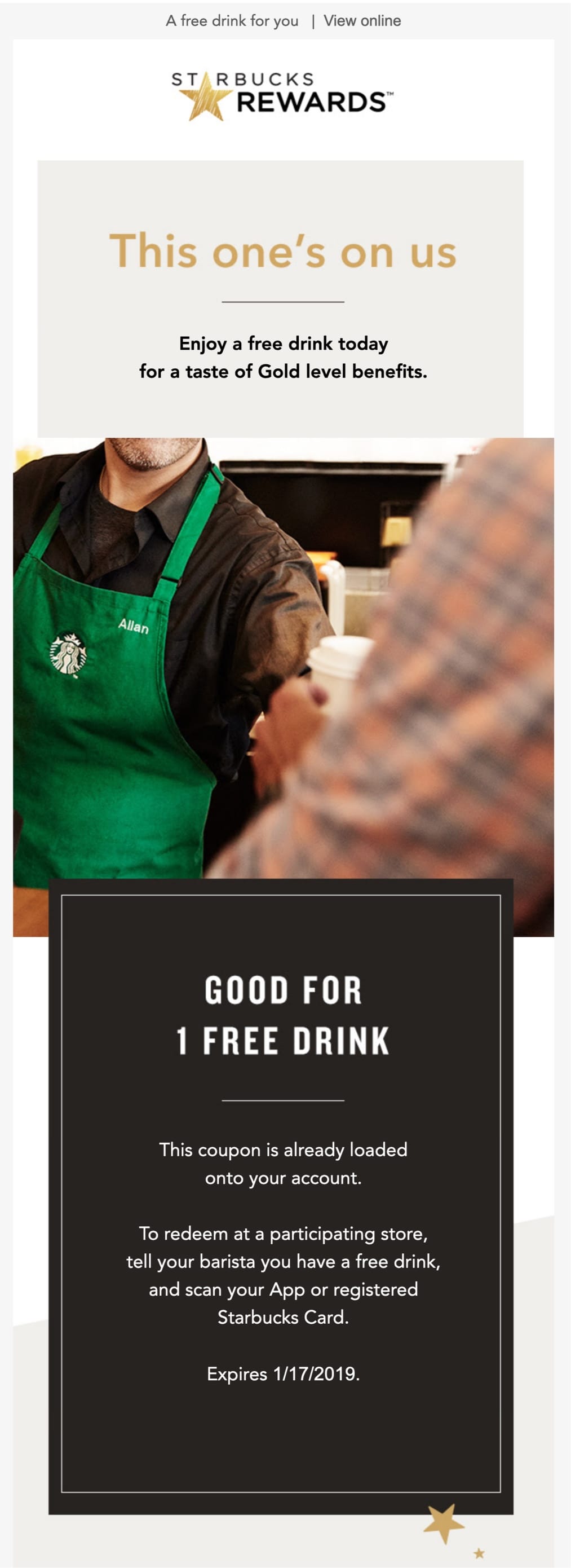
This example employs another email marketing best practice – it reminds me that I’m part of an exclusive club (email practice #1).
Say thanks
“Saying thank you – sincerely and with heart – feels good. Not just to the person receiving it, but also to the person offering it. And that’s part of work too. It’s hard to remember, as we process our hundredth email, that behind each message is a person.” – Harvard Business Review.
Gratitude is a powerful, and underutilized, email marketing best practice and can be used to develop relevant, meaningful, and valuable email interactions.
If you are grateful for your subscribers, users, and customers, let them know! Sometimes, it makes sense to dedicate an entire email to being thankful but, even where it doesn’t, you can ensure you show gratitude in every email you send, with a simple thank you.
Check out this thank you email from Headspace Co-founder, Andy Puddicombe.
It’s a nice email that also builds a sense of belonging and shares social proof regarding Headspace’s success (email marketing best practice #4).
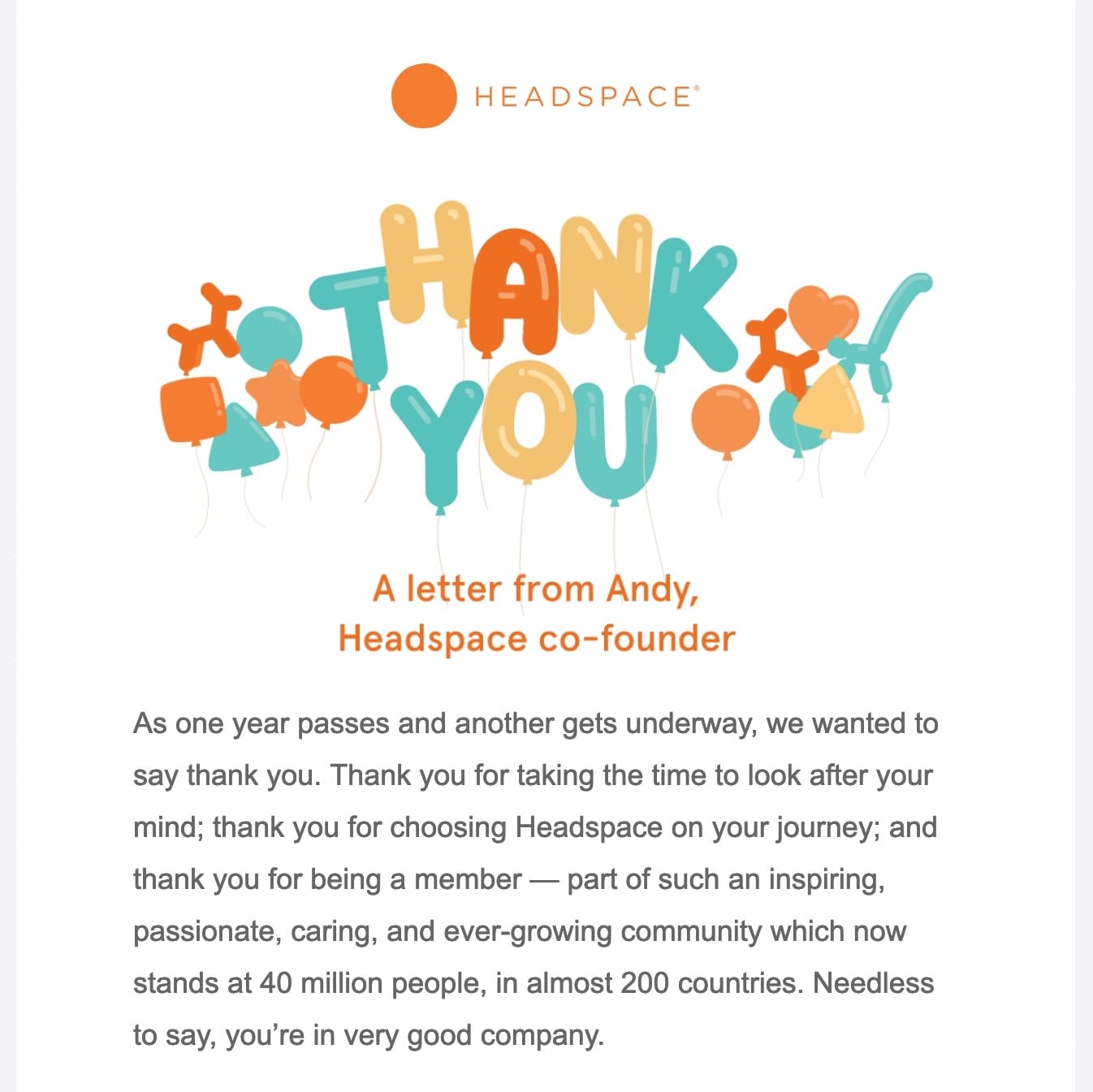
This email isn’t designed to convert new users or drive revenue, it simply helps to form and build a relationship with the customer.
Gamify a process
Using gamification techniques in email marketing can be an effective way to engage customers.
Starbucks applies this email marketing best practice by encouraging customers to collect stars by purchasing drinks. Customers gain reward through trading in stars for select merchandise.
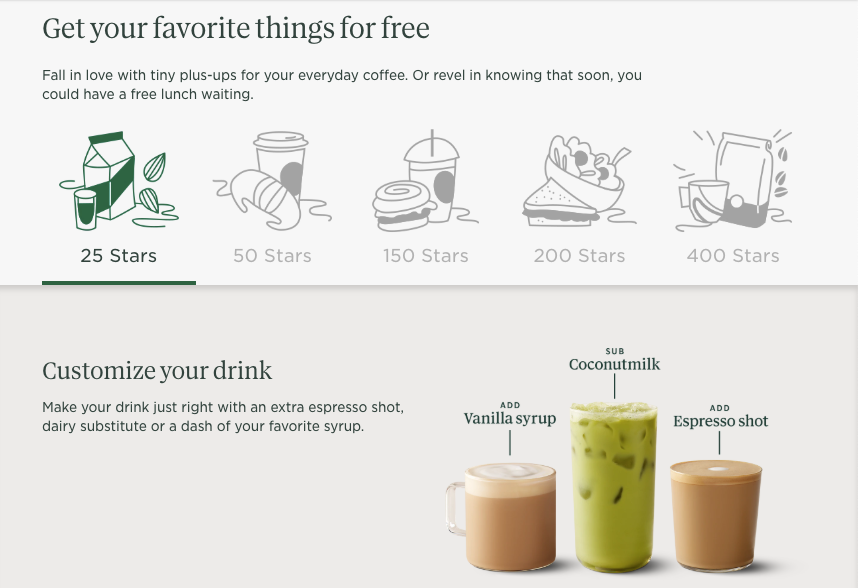
Adam Medros, TripAdvisor’s VP of Global Product, says that awarding regular contributors status designations and levels cannot be over-emphasized.
“It is an incredibly successful and powerful program our marketing team put into place the last few years around recognizing and creating this desire to come back and keep up your status and keep contributing.”
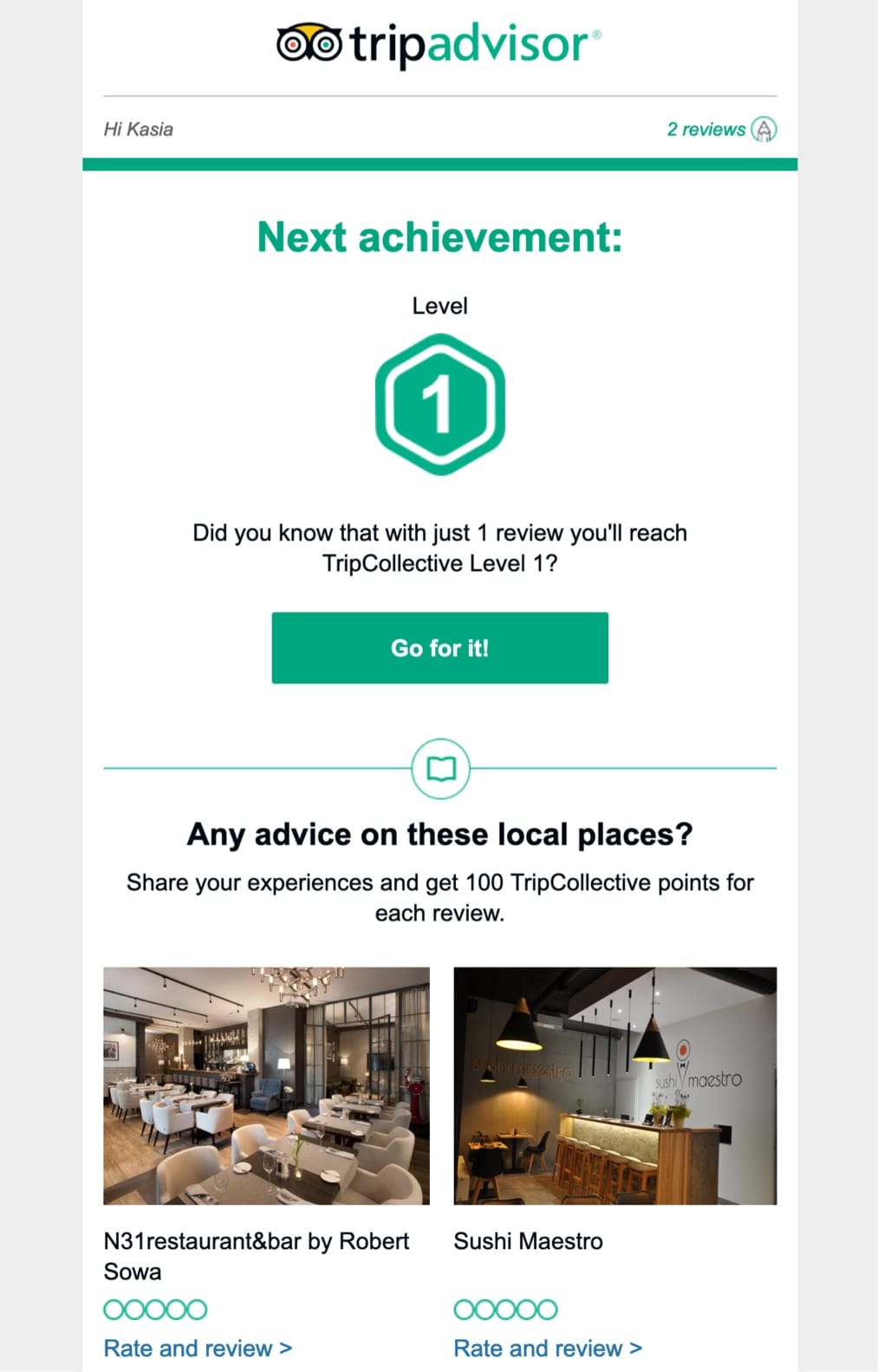
Read more about TripAdvisor’s email marketing.
Use the 1-2-3 method
The 1-2-3 method is a tried-and-tested email marketing best practice that helps prompt action.
Providing your readers with three clear next steps can alleviate the anxiety of the unknown. Now, that you’re aware of this technique, you’ll start noticing it in your inbox all the time.
This strategy works especially well in onboarding campaigns and welcome emails. Check out the example in Asana’s welcome email.
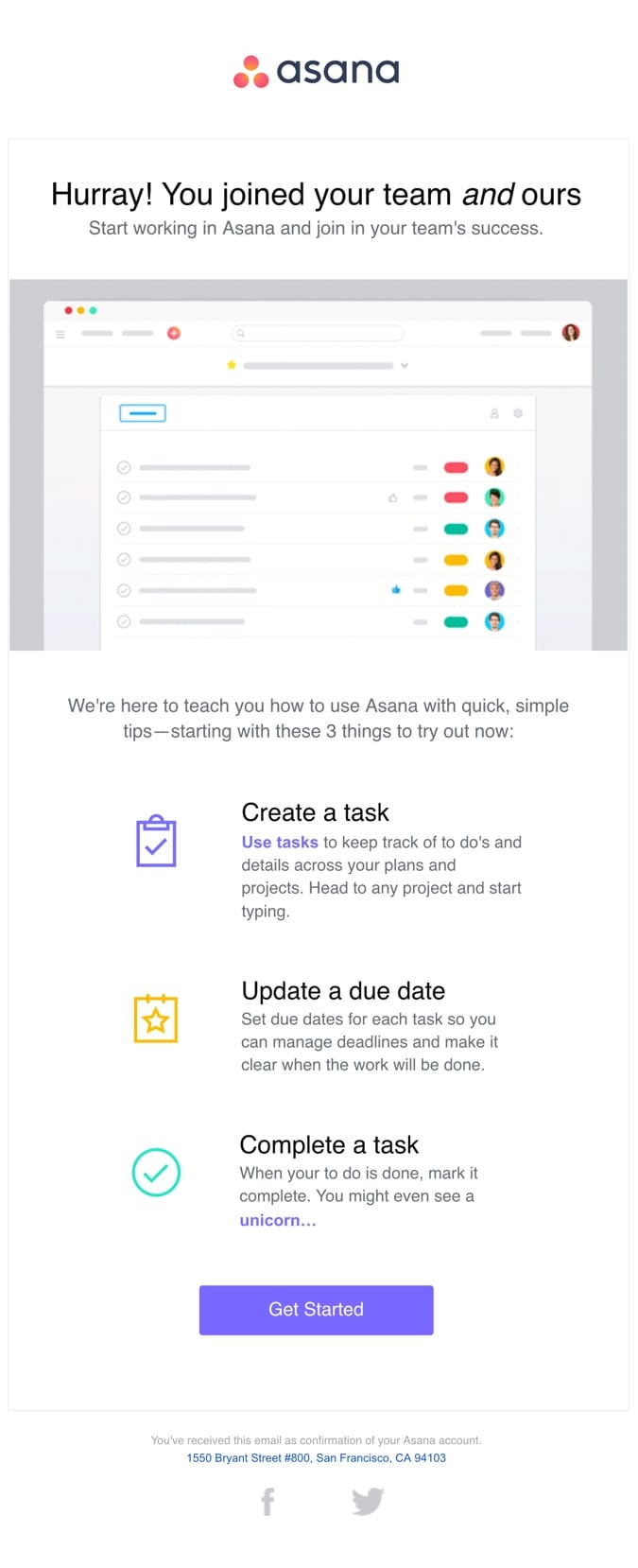
You don’t actually need to use numbers. Three bullet points, icons with short descriptions or sub-headers can work as well.
Pipedrive also applies the 1-2-3 method in their welcome email.

While three might be the optimal number for some, the format is more important than the actual number. The key is to not overload people with information or tasks.
InVision provides four simple steps to help new customers get started.

Read more about the 1-2-3 method.
Use the Inverted Pyramid Method
There are a lot of things that get in the way of a great email. Copy, content, and design come to mind. That sounds counterintuitive, but users need as little friction as possible. A simple model called the Inverted Pyramid Method can help keep your emails focused.
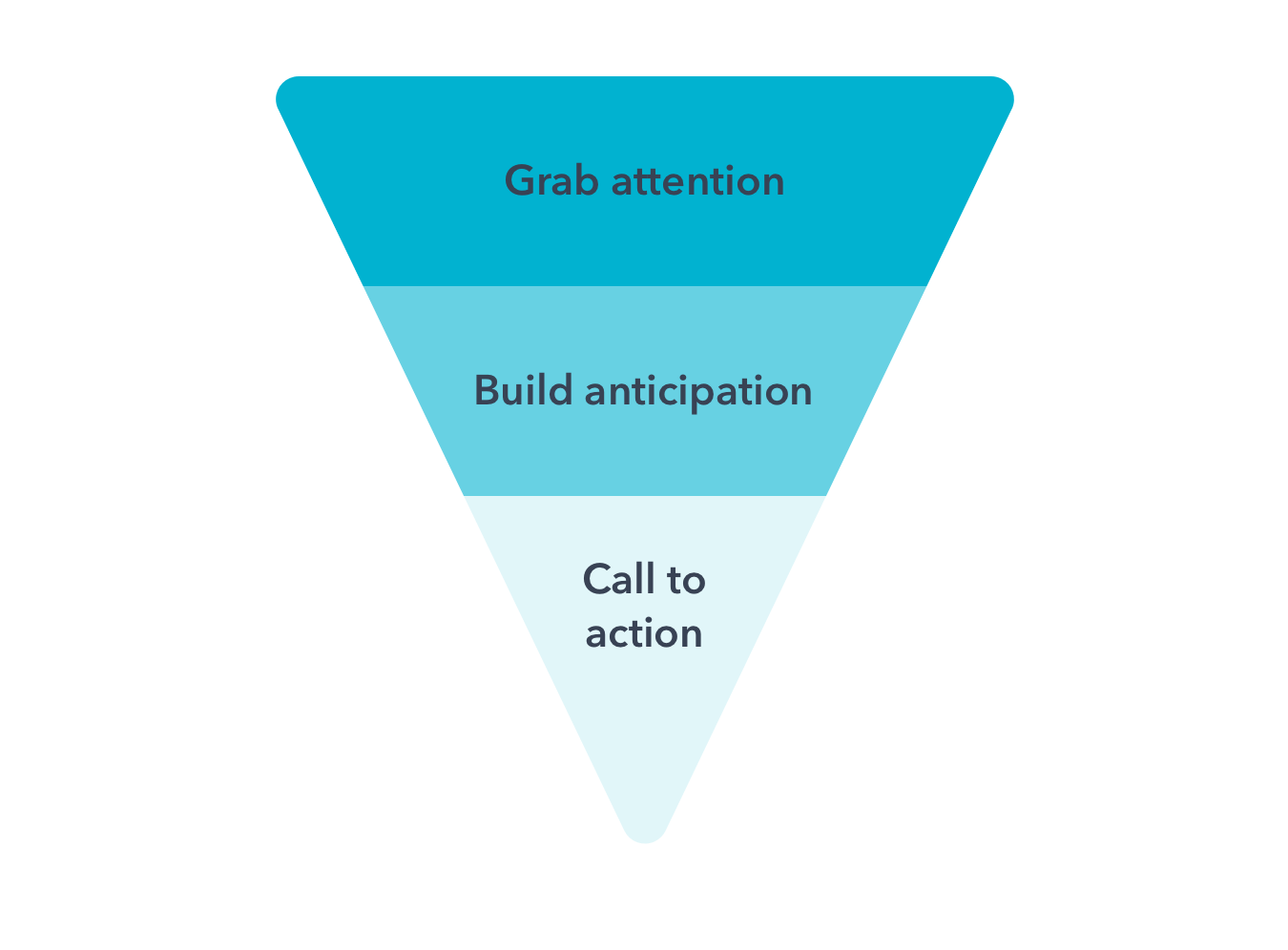
Nike puts this strategy to good use in a Black Friday email. They grab your attention, then guide your eyes towards the CTA button.

Help Scout provides another great example of this email marketing best practice.

Use the Inverted Pyramid Method when you need your emails to spark action.
Get the timing right
Optimizing emails for different time zones is one of the top email marketing best practices for teams who send to international subscribers.
Vero’s timezone scheduling allows you to send newsletters and automated campaigns to users in their own timezone. Instead of dropping an email at 10 am in New York and 11 pm in Singapore, your emails can arrive at 10 am regardless of the user’s location
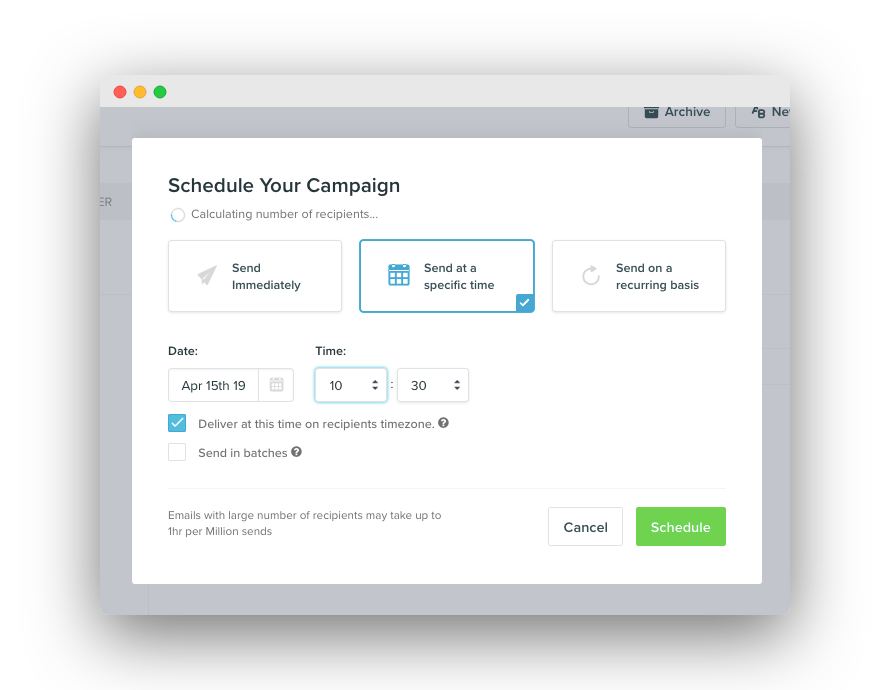
Personalize with dynamic content
This topic can be a rabbit hole, so let me quickly show you the four levels or content personalization:
Segments and Static Content
Divvy up your lists into segments and send content based on the group’s common interest. This is the baseline.
Insert Basic Customer Merge Tags
Merge tags are placeholders that are replaced by actual content
when the email is sent. Hey {{user.name}}! becomes
“Hey Jimmy!”
Collect and Insert On-Site Data
Use a tool like Vero to capture events – pages viewed, product usage, etc. – then use insert event attributes – product images and details, URLs, etc. – into your emails.
Abandoned cart emails are a good example of using this on-site
activity. An event is tracked – Viewed Cart – with
an event attribute that is an array of all the items in their
cart – including, for example, a `6″ Service Boot`. You can use
the event to trigger the email –
Send after 24 hours of inactivity – and use the event
attribute to populate the product field. You can even use the
product image (another event property) in the email.

Pull Data From Your Own Database
This is where dynamic content gets really interesting. We’ll use Vero customer Uniplaces as an example.
Uniplaces is a marketplace for students to book accommodations and for landlords to find tenants. When users sign up and begin searching for a house or apartment, Uniplaces tracks events and event properties that allow them to send impressive email campaigns.
When a logged-in user views a listing, they record an event –
Views listing – and an event property –
event.city. If the user fails to complete the next
event – Completes booking – Uniplaces sends an
email with suggested listings.
This is done by pulling in data from an external API (which you can read all about here).

Leverage the Zeigarnik Effect
In psychology, the Zeigarnik effect states that people remember uncompleted or interrupted tasks better than completed tasks. This is an uncomfortable feeling we get when things are left unfinished.
This email best practice is often applied in the use of progress bars. They help customers understand where they are in a process and how much more there is left to accomplish.
Take a look at this example from Dropbox:
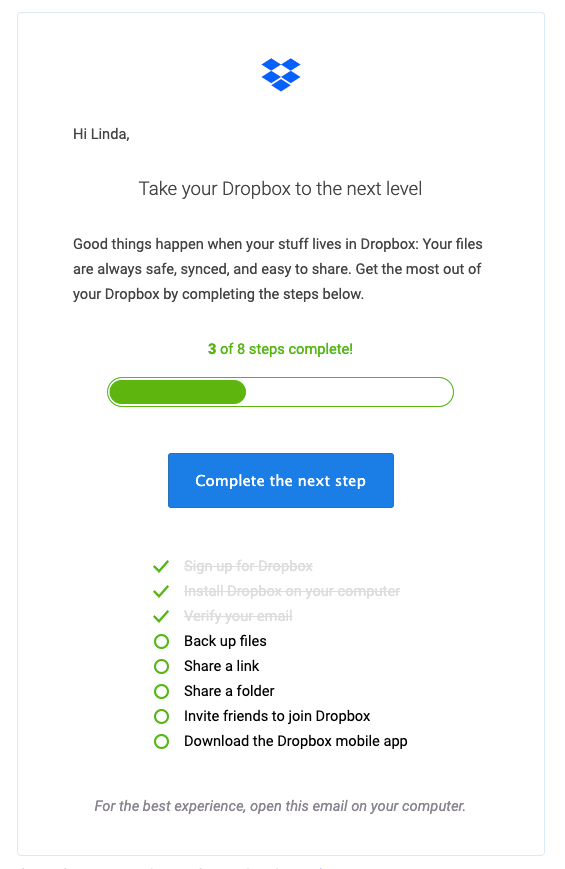
Discover more ways to leverage the Zeigarnik Effect.
Deliver valuable insights
Sending recurring emails with valuable insights is a great way to engage customers. Recurring emails can be used to deliver personalized usage reports and tips, based on your customers’ interactions with your website or app.
For example, Grammarly sends its customers a weekly update email providing benchmarks, personalized insights, and tips based on their app activity. This recurring email is the only place Grammarly customers get these metrics, so these emails are a true extension of their product.
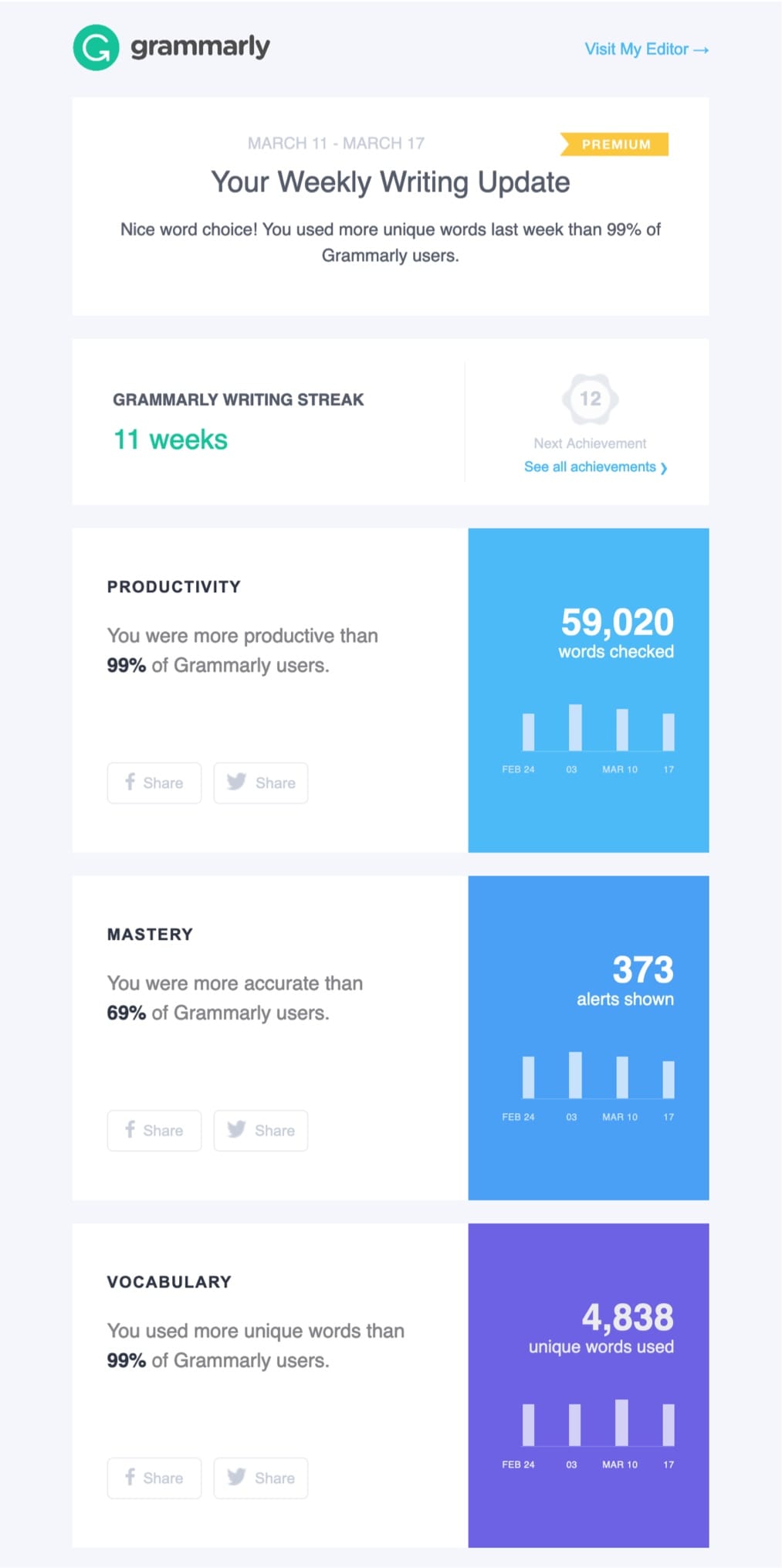
“The weekly reports product is meant to be our bread and butter from an email perspective… It’s a retention/engagement hybrid.” – Drew Price, Head of Product Marketing at Grammarly Read more about Grammarly’s email marketing best practices.
In addition to providing helpful insights and tips, recurring activity report emails can also be an opportunity to offer personalized product/ new feature recommendations based on customers’ account usage.
Read more about how Quora, Mint, SumoMe, and Buffer use recurring emails in their marketing.
Gather inspiration
When you need a bit of inspiration for a new campaign, take a look at the great brands already in your inbox.
Set up a label (in Gmail) or folder in your inbox and anytime you see a great subject line, beautiful email design or engaging copy – add the email message to your folder. Pretty soon, you’ll have a repository of inspiration that you can tap into for when you’re working on new email campaigns.
When you receive behavioral emails, take a few minutes to reverse-engineer them. Why did you receive it? Where did the data come from? How long after your last interaction was it sent? Your inbox is full of inspiration!
Encourage email replies
Email is a platform for two-way communication. Unlike other forms of marketing and advertising – television, podcast and banner ads to name a few – users can respond to emails. Using a no-reply email address can suggest to customers you don’t want to hear what they have to say and you could miss out on valuable feedback or a sale.
Asking people to reply is an email marketing best practice that doesn’t scale, but you can learn a ton in the process. Always make it easy for customers to get in touch. At Vero, we filter responses to our newsletter through Help Scout so that we can assign the right team member to handle each one.
Send progressively smarter emails
Every email you send provides an opportunity to learn more and improve the next email.
TripAdvisor’s emails get progressively better as they learn more about each user. New users receive generalized information based on the little TripAdvisor knows about them. For example, this email suggests destinations based on the user’s home airport.

Once TripAdvisor can be reasonably sure about the destination, they can send further emails with tips on where to stay and how to get there. As they collect data from the user’s on-site behavior and email clicks, the emails start to get smarter.

Price alerts based on the destination and dates:

In this TripAdvisor case study, we looked at 20 emails to see how they apply their learnings to subsequent emails.
Personalize emails with event data
If you’re new to behavioral email, here is a quick primer on capturing events.
When you
record a customer event in Vero
– let’s say viewed product for example – you can
also collect event properties. If an event is a noun, properties
are all the adjectives that describe it. Here are just a few
examples of properties you can collect based on the event
viewed product:
- sku number
- product name
- product color
- product price
- product image
- product category
- time
- location
- URL string
- referring page or source
All of this data is recorded with the event and attached to the customer’s profile. From here, you can insert event properties into an email to personalize the content. You can also use Liquid templating language to create dynamic content and further customize your email content.
Images in emails
Using images in your email marketing can be a powerful means to help sell a product or idea. They are particularly useful in verticals where customers purchase based on emotion.
Three things to remember:
Design to support situations where images are disabled
This example from 500px clearly shows how this can be done. It’s as good looking (and as functional) without images enabled as it is with images enabled. Get smart and put your email design skills to the test.

Use ALT tags correctly
If you have an HTML image tag you can include an attribute called ‘alt’. This allows you to define the text that will be seen if the image doesn’t load.
Use text instead of images everywhere you can
Although templates limit what you can do with backgrounds, having key sections of your email written in plain HTML text (rather than including headings as part of an image) is generally best practice.

